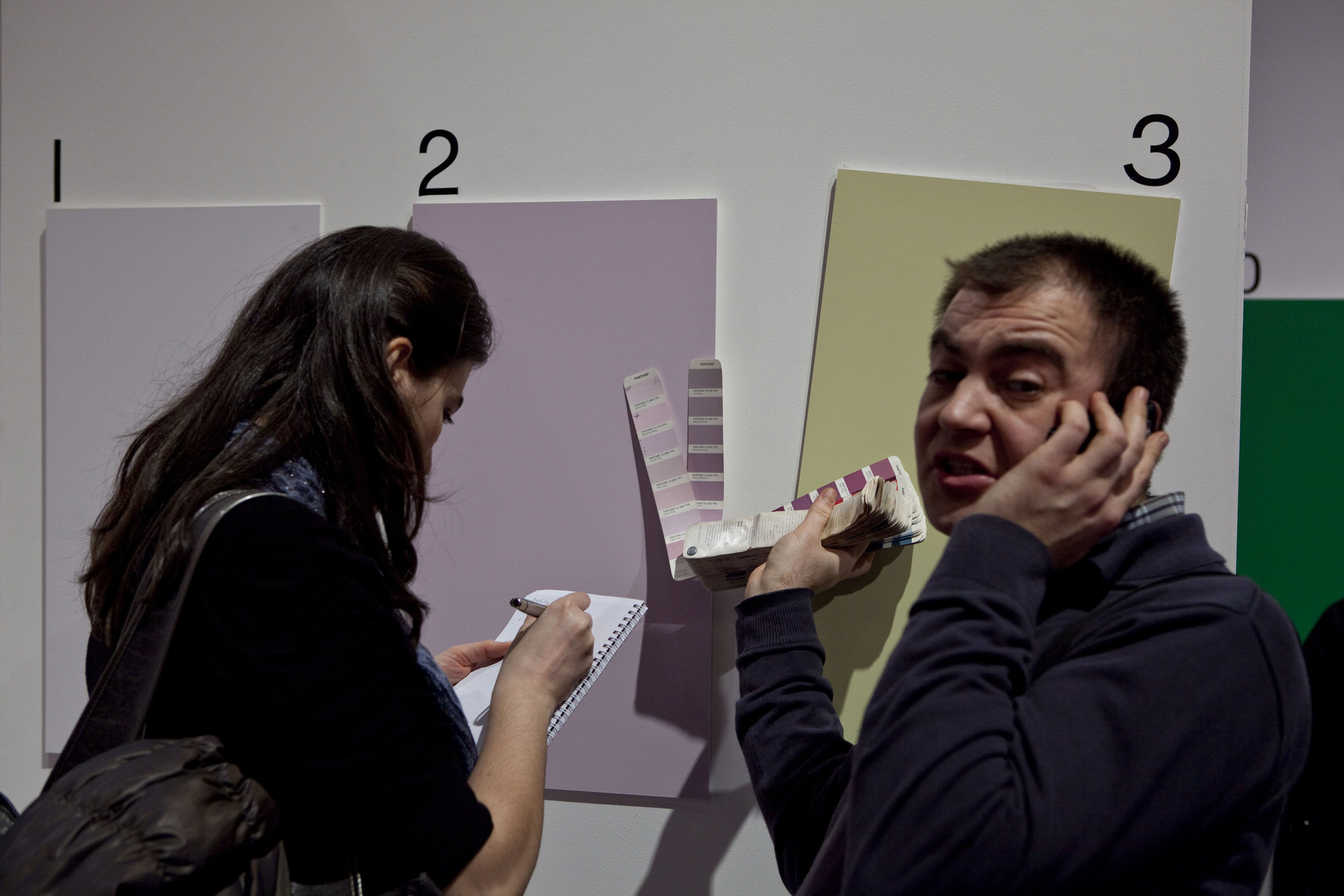Fashion’s Hard News Comes Out at Premiere Vision
Forget Fashion Week: the hard news is broken at Première Vision. Paris’s bi-annual salon predicts trends, colors and fabrics a year ahead of the fashion cycle. It tells you what you’ll be seeing throughout the sartorial cosmos—from Wal-Mart to Willhelm.
Created 35 years ago, the salon is now present in smaller incarnations all over the world, from New York to Moscow. The gigantic French mother fair is obligatory for anyone in the garment industry—or anyone interested in spotting Paul Smith flicking through fabric samples side-by-side the designer of Abercrombie and Fitch.
The latest edition opened last week, and it seems that in 2012, we will still be looking for ways to flash prudishly, thanks to the coarse lace pattern known as Guipare. This special type of thick embroidery results from being dipped in acetone—and is going to be on all the best backs and bottoms. One pioneer of the fabric is Swiss embroidery house Forster Rohner AG, present at the salon, who’s recently worked with Chanel, Dior, and Marc Jacobs. “Guipare makes total sense after the return of transparency in recent collections,” said Pascaline Wilhem, head of fashion for Premiere Vision.
The increased prominence of artificial fiber will change the relation to fabric and perceptions of quality, says Willhem: “It’s the end of the 100 percent hysteria. For a long time, people were reassured by the all-cotton, all-wool, all-whatever. But now, people are really starting the benefits of new fibers, which have been through tremendous improvement.” Wearers can now glow in the dark, or stay cool in dark clothes under tropical sun thanks to Jakob Schlaepfer‘s “Cold Black” fabric. The Swiss textile designer usually specializes in sport brands, but has clients like Prada and Ralph Lauren.
The digital era, too, is marking fashion in more ways than one: increasingly today, textile design is done online, allowing for a precision that would have never been possible by hand; also, 2.0 seeps into public consciousness, and it seems that by 2012, we will all be craving large 3D flowerprints, à la Avatar.”The digital era allows a new complexity in pattern making which wans’t possible before. Today, it’s treated like a scientific experiment.” Says Willhem.
And style-wise? “No more punk nonsense, we’re going to stop rolling about in the mud” continues the head of fashion. There will be lots of silhouettes and shapes we don’t have names for yet, she continues, “many deriving from harem pants and tulip skirts.” Fashion is constantly shedding its skin, and reinventing so-called classics: “But if I have one wish for the future of fashion, I hope stop being nostalgic about every damn era.”







